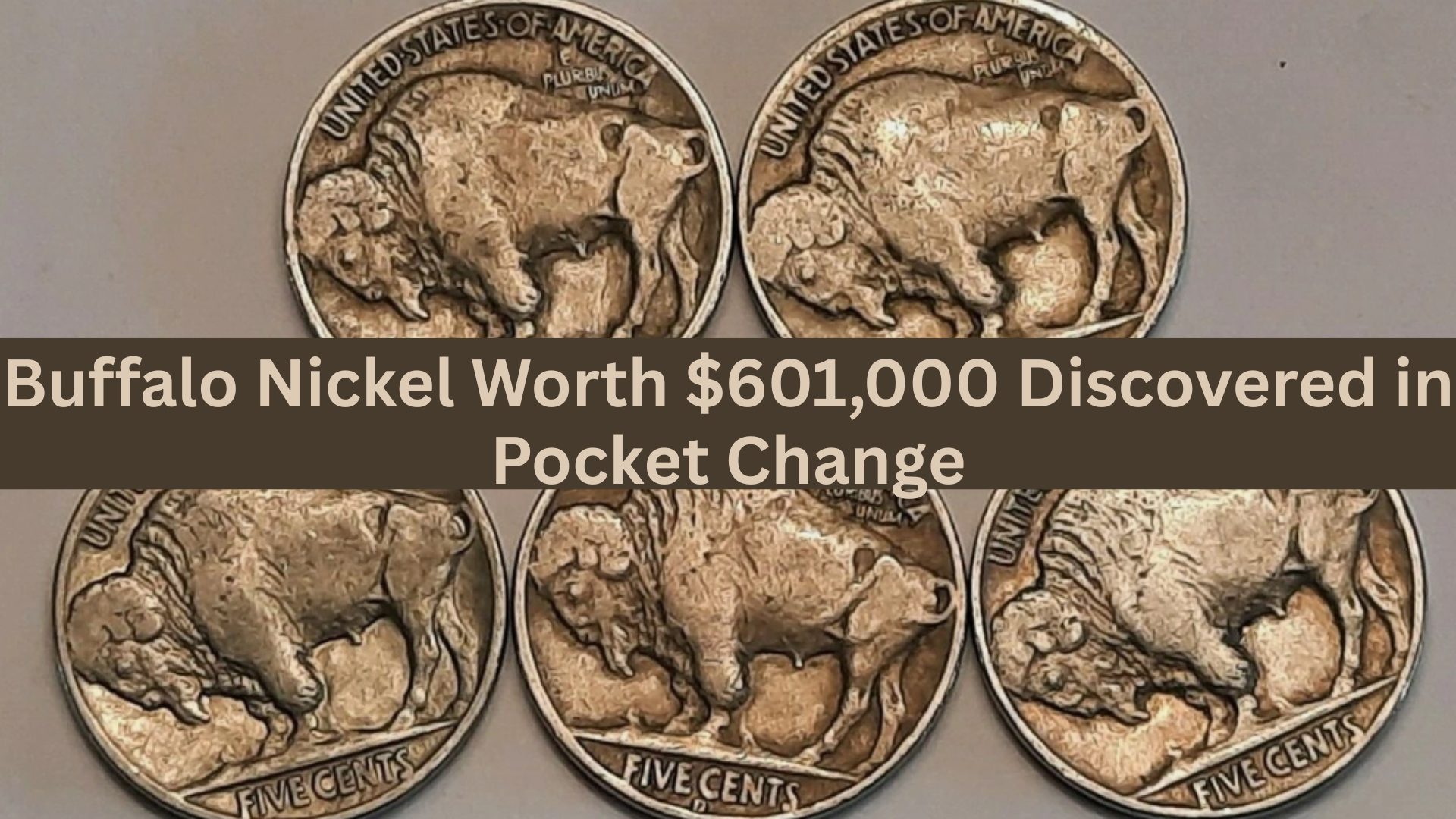A Surprising Find in Spare Change Has Turned Heads in the coin-collecting world as Buffalo Nickel Worth $601,000 Discovered in Pocket Change.
Buffalo Nickel Worth $601,000 Discovered in Pocket Change
An unsuspecting man from Pennsylvania recently uncovered a fortune in his spare change—a 1918/7-D Buffalo Nickel, a coin so rare and valuable that it fetched an astounding $601,000 at auction. This discovery has reignited interest in everyday coin hunting.
What Makes This Buffalo Nickel So Valuable?
The Buffalo Nickel, also known as the Indian Head Nickel, was minted from 1913 to 1938. Among all the years and mint marks, the 1918/7-D is especially unique due to a rare overdate error. In this case, the coin was struck with a 1917 die that was later repurposed for 1918 by engraving the new date over the old one—resulting in a visible 7 beneath the 8.

Key factors contributing to its value include
- Overdate Error: 7 is visible under the 8 in the date.
- Denver Mint (D): Much lower mintage than Philadelphia or San Francisco mints.
- High Grade: The discovered coin was in surprisingly excellent condition for being in circulation.
Collectors prize such anomalies because they combine historical error with scarcity.
Coin’s Journey from Pocket to Auction Block
The lucky finder reportedly received the coin in change after buying a snack at a vending machine. Initially mistaking it for just another old nickel, he noticed the unusual date and consulted a local coin dealer. Upon verification, the dealer confirmed its identity and rarity.
Soon after, the coin was submitted to a third-party grading service where it received a high grade for its excellent condition—especially for a coin over 100 years old. At auction, the coin shattered previous sales records for Buffalo Nickels, eventually selling for $601,000 to a private collector.
How to Identify Valuable Buffalo Nickels
If you’re curious whether you might have a valuable coin in your change jar, here’s what to look for:
| Feature | Details to Watch For |
|---|---|
| Date | Look for 1913–1938 coins, especially 1918/7-D |
| Mint Mark | A “D” below the “FIVE CENTS” signifies Denver mint |
| Condition | The clearer the date and details, the more valuable it is |
| Errors | Check for overdates, double strikes, or misalignments |
Using a magnifying glass can help in spotting the overdate and other fine details.
Why Rare Coins Can Still Be Found in Circulation
It may sound improbable, but rare coins continue to surface in regular transactions. Many coin hoards are dispersed unknowingly when passed down or cashed in by people unaware of their worth. In other cases, collectors or institutions may offload coins without properly assessing them.
Reasons why rare coins still circulate:
- Inherited collections are spent unknowingly.
- People mistakenly use old coins as regular change.
- Coin rolls from banks occasionally contain surprises.
This is why coin collectors often search through rolls from banks or loose change at home—hoping to find overlooked treasures.
The Growing Popularity of Coin Hunting
This discovery has sparked nationwide interest in “change hunting,” a hobby that involves checking everyday currency for rare coins. You don’t need to be an expert to start—just a sharp eye and some basic knowledge can go a long way.
Tips for aspiring collectors:
- Educate yourself using coin guides or online forums.
- Handle old coins carefully and avoid cleaning them.
- Visit local coin shows or dealers for advice and valuations.
More and more people are now seeing their spare change as more than just pocket filler—it could be a mini treasure chest.
Incredible stories like this remind us that history and fortune can be hiding in the most ordinary places—sometimes even in a handful of nickels.
Thanks for reading this article with us—keep checking your change, and who knows what you might find next.